Can you imagine a world without technology today? The answer is an obvious ‘NO‘. Then how can you think of healthcare in the absence of technology? From the moment you enter a hospital or clinic to the moment you return, everything is handled by using technical support. Either it is registering the patients at the reception or analyzing the lab samples and generating reports, all of the work is done using dedicated software. When India was under attack by the Covid19 pandemic, it became difficult for people to go to clinics in person for health problems being faced by them apart from corona infection. Technology came in as a savior and helped doctors to connect to their patients and solve their health queries.
The Healthcare sector has been giving an impeccable performance for years, revolutionizing day by day, touching newer heights by using various kinds of technologies.
Let us go through some of the striking technologies that are becoming increasingly popular and can be seen as the future of the medical industry.
Information technology role in the healthcare sector
Robotics
Robotics is one of the latest technologies that are being utilized in the healthcare sector. According to Phillip’s report on Future healthcare, 76% of healthcare professionals in India are already using digital health records. India also satisfies the 15-country average (46%) related to the usage of Artificial Intelligence within healthcare. Also, several state governments are using robotics for healthcare assistance.
The most recent event occurred in Indonesia in August 2021 where some villagers joined hands with scientists to build a robot for helping Corona patients in taking essential food and medication. Another example is the KarmiBot robot that was installed by the Kerala health department to provide medicines and nutriment to the Covid19 patients so that they can prevent any infections in the medical staff due to direct contact.
Even AIIMS Delhi has been using a humanoid robot as a floor disinfectant in its Covid-19 wards. Fortis Hospital, Bengaluru is also using an interactive robot to screen patients and medical staff at its entrance.
Robots are most commonly used for surgeries but it’s not the only area in which health professionals use robotics. From the making of drugs to supplying them to the needy, Robotics can be used at various stages. Robots are being used as medical assistants to monitor patient vital statistics and alert the nurses when there is a need for a human presence in the room, allowing nurses to monitor several patients at once. Robots are being used in laboratories while processing day-to-day tasks to reduce the burden of an already occupied staff.
Nanotechnology is still to explore its righteous strength but it definitely has the capability to take robotics to new dimensions in healthcare as the development of nanoscale robots is in progress. These tiny robots will traverse through the body of a patient to check whether he has any anomalies or abnormalities.
One of the examples of robotic surgery is Dr. Tejas Patel of Gujrat, a cardiac surgeon by profession who performed the world’s first heart surgery from a remote location in 2018 with the help of advanced robotics. He conducted the world’s first telerobotic surgery on a middle-aged woman with a blocked artery while sitting 32 kilometers away from the patient.
Other areas in which robotics is being implemented are- telepresence, rehabilitation, medical transportation, sanitation, and prescription dispensing.
Usage of Drones
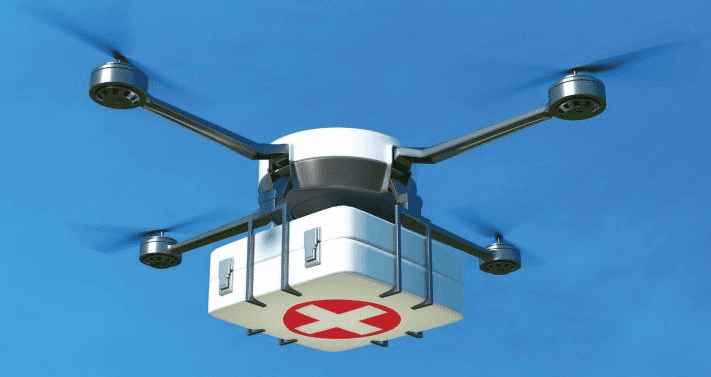
Unmanned Aerial Vehicles (UAVs) which are also known as Drones, can be proved as a blessing for healthcare. They are capable of playing a significant role in military and civil medical emergencies. They can be used for rescue operations, provide blood in remote locations, analyze the scale of damage, monitor social gatherings, and transport goods on demand.
Recently Telangana Government joined hands with Flipkart to facilitate door-to-door delivery of medicines through drones. Australia has also started drone delivery of healthcare products in 2019 to provide comfort to people so that they can get their required medication while staying at their houses. The use of drones rendered smooth and quick deliveries and actually curtailed the workload of the delivery personnel.
During the Covid19 pandemic, Governments along with the traffic police of various states circulated drones to ensure the successful compliance of social distancing norms.
Cincinnati university is developing a telehealth drone that will enable patients to communicate with their medical providers using cameras and a display screen. The prototype carries a waterproof box which has the size of a small first-aid kit to deliver medical supplies or collect self-administered lab tests.
There are plenty of medical startups that are working on building the most promising drones that will have the potential of revolutionizing healthcare shortly.
Some of the healthcare startups are as follows:
- Seattle’s VillageReach
- Flirtey
- EHang
- Zipline Rwanda
- TU Delft
- Project Wing
- Google Drones
- Healthcare Integrated Rescue Operation (Hiro)
- Vayu drones
Advanced Telemedicine
Telemedicine is an ingenious system of healthcare in which telecommunication and Information technology are utilized to provide medical assistance from long distances. It has uncountable advantages, some of them are as follows:
- A countrywide lockdown of nearly twelve weeks in India reduced access to regular healthcare services. Patients were not feeling very comfortable going for regular checkups. The Government of India launched several telemedicine services that enabled doctors to communicate with their patients and guide them through their problems frequently. E- Sanjeevani is one of the telehealth services that became increasingly popular during the corona outbreak. It recently completed 3 million consultations in March 2021.
- This National Telemedicine Service is currently operational in 31 states and UTs and approx 35,000 Patients are using it to seek health services. Patients can book time slots for consultation, upload their medical reports or images in case of any skin allergy or infection.
- Almost every other state in the country introduced their own medical helplines along with dedicated covid helplines to provide real-time healthcare solutions to general as well as Covid patients. If we analyze closely, it would have been nearly impossible to handle the pandemic chaos without the help of telehealth services.
Digital Health Assistants
A digital health assistant is a secure digital health tool for managing medications, disease conditions, vitals, labs, and symptoms. Some of the popular Voice come digital assistants include Amazon Alexa, Google Assistant, Siri, and Cortana which are also known as Conversational AI Interfaces. It can speak different languages and can be controlled via voice or text commands. It is capable of handling the user input and processing the data for self-learning. It can work as a daily diary or reminder of all your medication schedules. Many companies are also designing their own virtual health assistants to enable their employees to keep track of their health and stay fit.
Recently Allianz partners introduced an integrated Digital health assistant which is easily accessible on a mobile device or desktop via any conversational social media application like Whatsapp or Telegram and provides customers with immediate and direct access to medical services like Symptom checking, Doctor chat, and 24*7 Medical hotline. Currently, it is accessible to around 8 lakh people across Western Europe as well as the Asia Pacific Region.
Wearable Technologies
Fitness Trackers: The pandemic intensified the role of wearable technology adoption in the healthcare industry. Among the wearable health-tracking devices, one of the most prominent devices is fitness trackers. These trackers can keep track of your daily fitness routine, from the number of steps you walk to the number of calories that you burn in a day, it tracks everything. It can measure your heart rate as well. Some of the well-known fitness trackers are Fitbit Charge4, Amazfit Bip, Garmin Vivosmart 4, and many more.
Smart health watches like Samsung Galaxy Watch, the Apple watch series, and the Fitbit Versa 3 are changing the face of the care and wellness industry.
Wearable ECG monitors like Move ECG can measure an electrocardiogram and send the reading to the user’s doctor as well as detect atrial fibrillation. It can also track pace, distance, elevation with an advanced feature to automatically track running, walking, swimming and biking.
Wearable blood pressure monitors: The first wearable blood pressure monitor “HeartGuide” was launched in 2019 by Omron Healthcare. It typically looks like a smartwatch but is oscillometric in nature and can measure blood pressure and daily activities.
Biosensors: Another type of wearable health device is a Biosensor which is a self-adhesive patch that collects data while the patient is in motion. It can measure movement, heart rate, respiratory rate, and temperature as well.
Mobile Applications and software
- Video conferencing applications like Webex and Zoom are widely being used to conduct online health and wellness seminars. The health ministry organizes webinars regularly for the employees registered under the Central Government Health Scheme i.e. CGHS. The beneficiaries can easily join the webinar by clicking on the Webex link sent as a message by the health ministry portal.
- Mobile applications like Arogya Setu and Cowin were widely used for Covid vaccination registration during the pandemic. These applications actually played a really pivotal role as people were able to register for vaccination, select a nearby vaccination center, and an appropriate time slot according to their convenience.
- Various state governments launched several mobile applications for contact tracing and Covid care. Some of the notable examples are the Covid Pharma app by Andhra Pradesh Government, Kavach by Chhattisgarh, Test yourself by Goa and Pondicherry, Quarantine Monitor by Tamil Nadu, and many more.
- Mobile applications for tracking the menstrual cycle while planning a baby have become absolutely common today. Many couples are using these apps to track their chances while they are trying to start a family. Android applications like Clue, Ovia, Period Tracker Period Calendar are really helping women to deal with their menstrual health issues.
- The day-to-day activities of any clinic or hospital, the generation of reports after testing the samples, handling personal data of the patients or professional records of staff, all of this is done by using multipurpose software. Maintaining health records has been made way too easier by the use of dedicated software.
3D Printing
As per the report by SmarTech Analysis, a market research firm suggests that the 3D printing market for healthcare is currently estimated to be worth 1.25 billion $ and is expected to grow and reach 6.08 billion $ by 2027. The resources and potential that it can provide to the healthcare industry are unimaginable.
3D printing, also known as additive manufacturing, is a method of creating a three-dimensional object layer by layer using a computer-created design. It can be adopted for multiple purposes in the healthcare sector:
- 3D printed orthopedic implants to create better and longer-lasting implants with improved performance.
- It can also be used in developing patient-specific models of organs and surgical tools, using the patient’s own medical imaging which can later be used for personalized surgeries.
- Medical and dental devices like prosthetics, braces, dentures, restorations, and clear aligners can considerably benefit from 3D printing.
- 3D printing can solve the shortage of organ donations by creating substitute organs.
- 3D printing can revolutionize heart surgery to a great extent. Recently a child suffering from acute heart disease was saved by cloning his heart into an exact copy resulting in a 3D printed heart.
AI and Machine Learning
Though we have discussed a few applications of AI and ML in the earlier section of this article, there is a need to elaborate its usage further separately.
Artificial Intelligence and Machine learning are some of the most remarkable technologies that are being used to cultivate brilliance in healthcare. Machine learning is generally a subset of AI, plays a key role in many of the health domains including the development of the medical procedure, handling patient data and records as well as treating the most chronic diseases. AI is being considered as the future of medicine but Why? Let us have a look.
- Machine learning can be used to maintain smart records that improve care at a lower cost.
- An American healthcare Giant KenSci is using machine learning to predict illness and treatment to help physicians. It can also predict population health risks by identifying patterns.
- Machine learning is used by pathologists to make a quicker and more accurate diagnosis as well as in identifying patients who might benefit from new types of treatments or therapies.
- ML is also being used for better and speedy diagnosis of breast cancer by Quantitative Insights, a Chicago-based healthcare firm, which has developed a computer-assisted breast MRI workstation Quants.
- Brain mapping is one of the most popular uses of Artificial Intelligence, which enables neurologists to explore the inner thoughts of patients suffering from psychological disorders.
- There are 3D radiological images that assist medical experts in radiotherapy and surgical planning. It employs machine learning to differentiate between tumors and healthy anatomy.
Augmented Reality and Virtual Reality
There is a slight difference between AR and VR in which people often get confused. AR technology enhances your reality and modifies it to unimaginable perfection while VR creates a virtual world in which you might be able to do things that you were not able to do in the real world. These advanced technologies can make many things more comfortable to carry out.
- Most of the medical equipment today comes with a ‘try before you buy’ scenario where AR and VR prototypes are made to improve the patient experience.
- An elaborated VR environment can be created for pain reduction and psychological relief. It can also help in improving sleeping habits. These specific environments can help treat various mental conditions like anxieties, phobias, and addictions.
- VR healthcare simulation of events can result in a better understanding of the patterns of any disorder and develop more effective strategies to tackle it.
- VR is extremely useful in treating Post Traumatic stress disorders while AR can be used in data visualization, body mapping, and creating interactive patient information.
- AR can show the stats directly on the patient’s body by painting out the problematic points and showing the relevant information associated with them. The whole thing can be fitted into a pair of smart glasses and accessed through a smartphone.
- While performing the examination process via body mapping, a full recreation of a patient’s body can be done when the case is complicated or the doctor is physically unable to attend the examination.
- One of the most appealing uses of AR and VR in the healthcare industry can be in training medical professionals. VR healthcare training can be proved as a promising way of understanding human anatomy layer by layer. A possibility to experience a surgery not as a passive spectator but by being an active learner using medical simulation modules.
- Medical simulation allows the acquisition of clinical skills through deliberate practice rather than an apprentice-style of learning.
We discussed a few criteria here but there are many more fields in which technology is helping healthcare to evolve and break the barrier created by the traditional practices. But there is one more thing that we should always be cautioned about. As quoted by Christian Lous Lange, a prominent historian of his era, “Technology is a useful servant but a dangerous master“. This manifests that we should always keep reminding ourselves that the control should always remain in our hands. Technologies are there to support our hard work, not to own it.
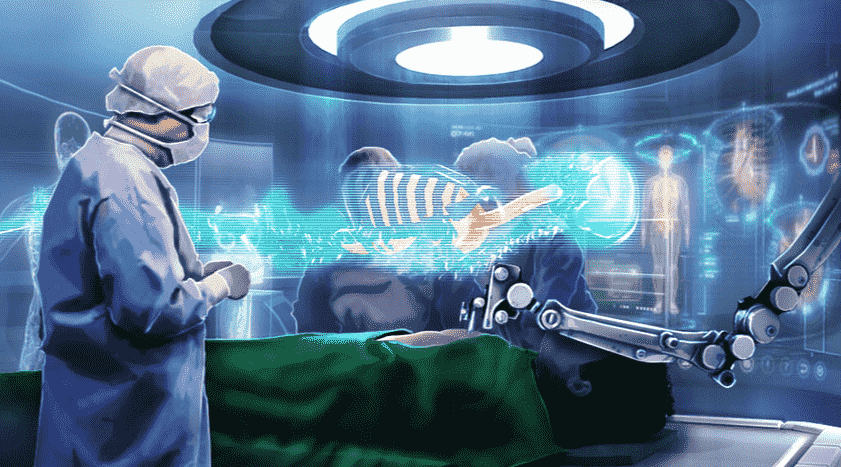

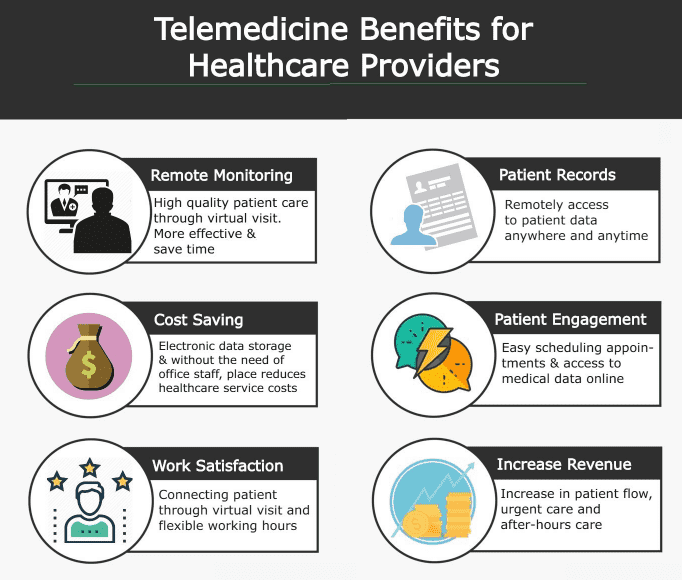
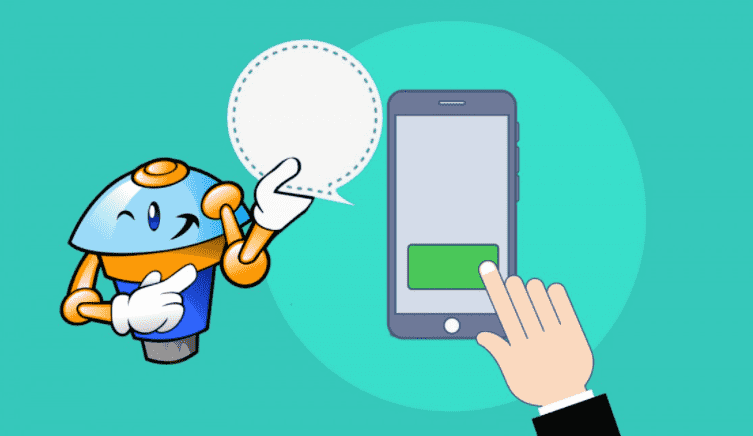
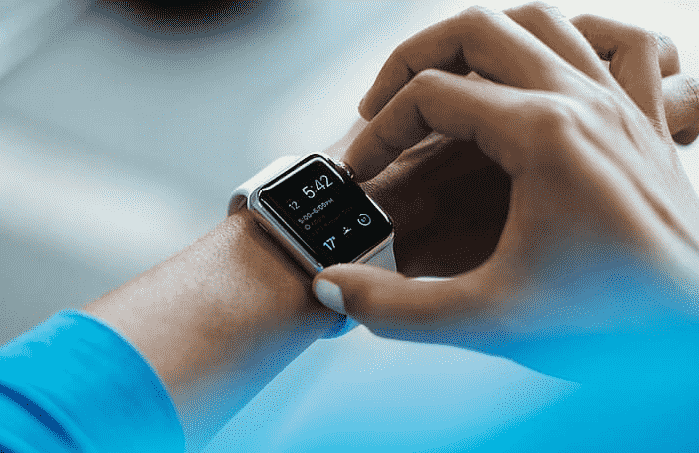
Related Posts
What is a juice-jacking attack? How can we be safe from such attacks?
Getting the right dashcam for your needs. All that you need to know
WhatsApp iPad App Gets Major Overhaul, Adds New Communities Feature
Moto G85 5G launched in India but is unlikely to beat VIVO or XIAOMI
Rise of deepfake technology. How is it impacting society?
Smartphone Apps Get Smarter- Meta AI’s Integration Across Popular Platforms